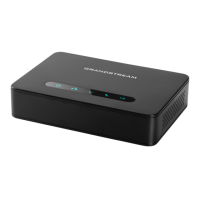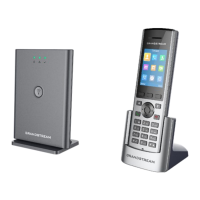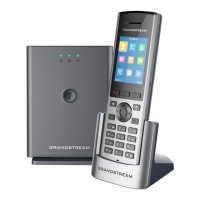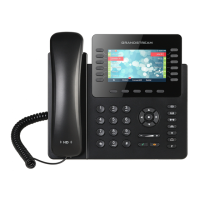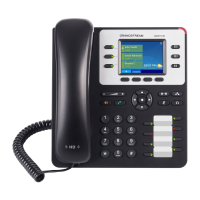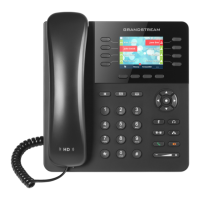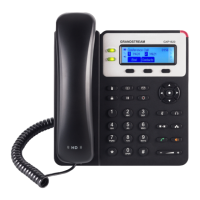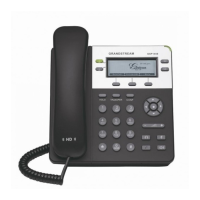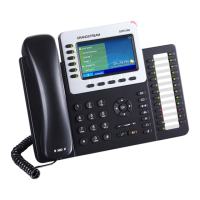Firmware version 1.0.0.31 DP715/DP710 User Manual Page 48 of 56
inside the dial plan feature. An example dial plan will be: { *x+ } which allows the user to
dial * followed by any length of numbers.
SUBSCRIBE for MWI
Default is “No”. When set to “Yes” a SUBSCRIBE for Message Waiting Indication will be
sent periodically.
Send Anonymous
If this parame
ter is set to “Yes”, the “From” header in outgoing INVITE message will be set
to anonymous, essentially blocking the Caller ID from displaying.
Disable Call-Waiting Default is No. If set to YESCall Waiting indication information will not be provided to
Handset.
Disable Call-Waiting
Caller ID
Default is No. If set to YES Call Waiting caller ID will not be provided to the handset.
Disable Reminder Ring
for On-Hold Call
Default is No. Play the reminder ring when this is set to Enable.
Default is “No”. If set to “Yes”, anonymous call will be rejected.
The SIP Session Timer extension enables SIP sessions to be periodically “refreshed” via
a SIP request (UPDATE, or re-INVITE. Once the session interval expires, if there is no
refresh via a UPDATE or re-INVITE message, the session is terminated.
Session Expiration is the time (in seconds) at which the session is considered timed out,
provided no successful session refresh transaction occurs beforehand. The default value
Defines the minimum session expiration (in seconds). Default is 90 seconds.
If set to “Yes”, the phone will use session timer when it makes outbound calls if remote
party supports session timer.
If selecting “Yes”, the phone will use session timer when it receives inbound calls with
session timer request.
If set to “Yes”, the phone will use session timer even if the remote party does not support
this feature. If set to “No”, the
session timer is enabled only when the remote party
supports this feature. To turn off Session Timer, select “No” for Caller Request Timer,
Callee Request Timer, and Force Timer.
As a Caller, select UAC to use the phone as the refresher, or UAS to use the Callee or
proxy server as the refresher.
As a Callee, select UAC to use caller or proxy server as the refresher, or UAS to use the
phone as the refresher.
Session Timer can be refreshed using INVITE method or UPDATE method. Select “Yes”
to use INVITE method to refresh the session timer.
PRACK (Provisional Acknowledgment) method enables reliability to SIP provisional
responses (1xx series).
The DP715 supports up to 6 different Vocoder types including G.711 A-/U-law, G.726-32 ,
G.723.1, G.729A/B and iLBC. The user can configure Vocoders in a preference list that
will be included with the same preference order in SDP message. The first Vocoder is
entered by choosing the appropriate option in “Choice 1”. The last Vocoder is entered by
choosing the appropriate option in “Choice 6”.
Default is No. VAD allows detecting the absence of audio and conserves bandwidth by
preventing the transmission of “silent packets” over the network.
Select either Fixed or Adaptive based on network conditions.
Select Low, Medium, or High based on network conditions.
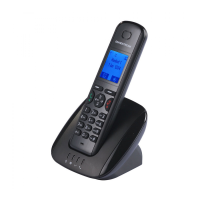
